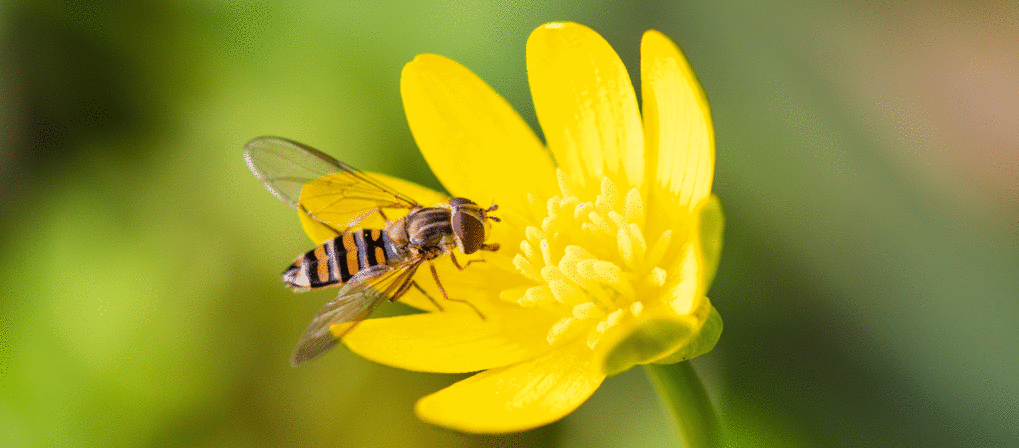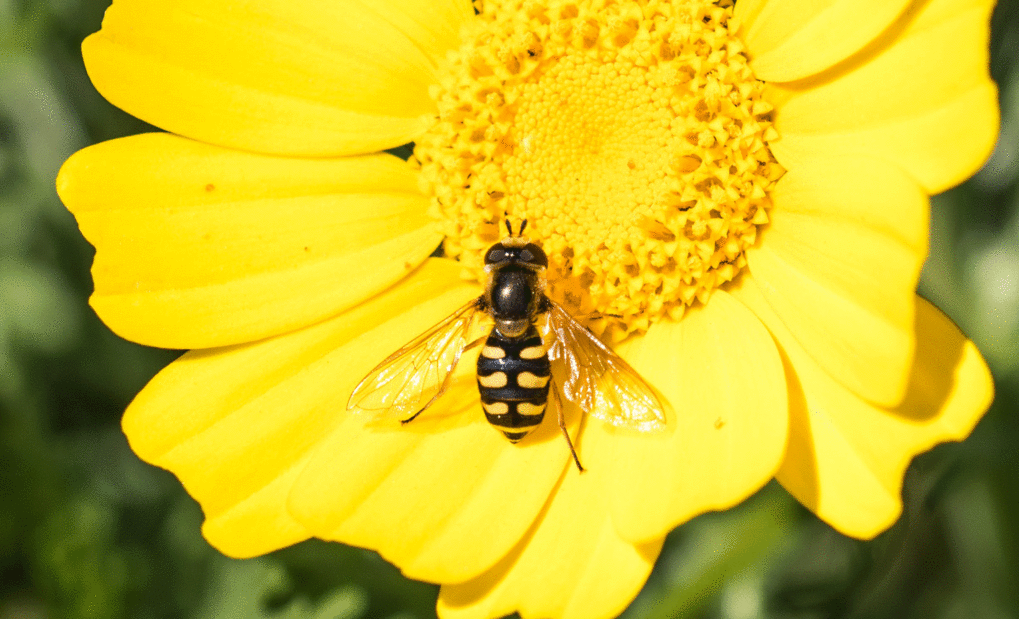Many billions of hoverflies commute every year between Great Britain and the European mainland
Life on Earth is in continuous movement. Many animal species migrate seasonally from winter to summer habitats. These include numerous insects, and, according to the latest findings, also hoverflies. Scientists at the University of Exeter have studied the patterns of movement of insects in the UK and found that up to four billion individuals fly to and from the UK every year. Hoverflies wait for favourable winds in spring before flying at altitudes of up to 1000 metres from the European mainland to Great Britain. In autumn they return to the mainland over the English Channel.

In contrast to wasps and bees, with which they are often confused, hoverflies are true flies. They are some of the most important pollinators, alongside bees and are key pollinators of berry fruit and brassica crops, as well as a multitude of wildflower species. Their larvae also feed on various species of aphids, which major crop pests.
Researchers from the universities of Exeter, Greenwich and Nanjing studied the flight patterns of two hoverfly species: the marmalade hoverfly (Episyrphus balteatus) and the vagrant hoverfly (Eupeodes corollae). The research utilized specialised radars designed specifically for monitoring insects. “Our analysis shows that up to four billion hoverflies cross to and from Great Britain every year,” says Myles Menz, who is now a research scientist at the Max Planck Institute of Animal Behavior in Constance. “That’s considerably more than we expected,” adds Karl Wotton, a researcher at the University of Exeter.
Tons of nutrients
In view of the enormous number, the researchers estimate that hoverflies in Great Britain pollinate many billions of flowers, and their larvae eat up to ten trillion aphids. Moreover, the insects transport billions of pollen grains on their flight and distribute many tons of nutrients between Great Britain and Europe. Hoverflies could, therefore, be a key to ensuring insect pollination in the future.
A hoverfly female can lay up to 400 eggs during her approximately month-long life. After their arrival in Great Britain, the insects evidently reproduce successfully. Despite high losses due to predators and parasites, around a billion more hoverflies fly back to the mainland in autumn than arrive in spring. That’s equivalent to approximately 28 tons of biomass. “That makes Great Britain a net exporter of hoverflies,” says Jason Chapman from the University of Exeter.
Stable numbers

The observations also showed that the number of migrating hoverflies can vary considerably from year to year. However, the researchers have not established a clear trend. It appears that hoverfly numbers have remained relatively stable over the last ten years. In contrast, many other insects have declined sharply in numbers over recent decades, with more than 40 per cent of the world’s species now threatened with extinction. “From studies, we know that migrating insects aren’t generally declining at the same rate as endemic species. Presumably, thanks to their mobility, they can discover the best habitat areas to live in,” explains Chapman.
Migratory birds are among the best known migratory species. In addition, many fish and mammals cover long distances throughout the year. But insects are also long-distance specialists. The best-known example is the monarch butterfly, which travels many thousands of kilometres between its breeding and its wintering grounds in North America and Mexico. In spring, butterflies such as the painted lady and the red admiral fly from Africa and southern Europe to central and northern Europe, before returning in the autumn.
HR








